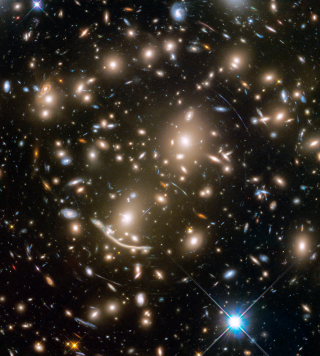Bibcode
Habibi, Asiyeh; Roshan, Mahmood; Hosseinirad, Mohammad; Khosroshahi, Habib; Aguerri, J. A. L.; Cuomo, Virginia; Abbassi, Shahram
Bibliographical reference
Astronomy and Astrophysics
Advertised on:
11
2024
Journal
Citations
0
Refereed citations
0
Description
In this paper, the redshift evolution of the galactic bar properties, like the bar length, pattern speed, and bar fraction, has been investigated for simulated galaxies at stellar masses of M* > 1010 M$\odot$ in the cosmological magnetohydrodynamical simulation TNG50. We focus on the redshift evolution of the bar pattern speeds and the fast bar tension. We show that the median value of the pattern speed of the bars increases as the redshift grows. On the other hand, although the median value of the bar length increases with time, the ratio between the corotation radius and the bar radius - namely, the $R$ = $R$ CR/Rbar parameter - increases as well. In other words, the corotation radius increases with a higher rate than the bar length. This directly means that galactic bars slow down with time, or equivalently as the redshift declines. We discuss the possible mechanisms that reduce the pattern speeds in TNG50. We demonstrate that while mergers can have a significant impact on a galaxy's pattern speed, they do not play a crucial role in the overall evolution of mean pattern speed within the redshift range $\textrtz$ ≤ 1.0. Furthermore, we show that the $R$ parameter does not correlate with the gas fraction. Consequently, the existence of gas in TNG50 does not alleviate the fast bar tension. We show that the mean value of the pattern speed, computed for all the galaxies irrespective of their mass, at $\textrtz$ = 1.0 is $\Omega$p = 70.98 ± 2.34 km s‑1 kpc‑1 and reduces to $\Omega$p = 33.65 ± 1.07 km s‑1 kpc‑1 at $\textrtz$ = 0.0. This is a direct prediction by TNG50 that bars at $\textrtz$ = 1.0 rotate faster by a factor of ~2 compared to bars at $\textrtz$ = 0.0.
Related projects

Galaxy Evolution in Clusters of Galaxies
Galaxies in the universe can be located in different environments, some of them are isolated or in low density regions and they are usually called field galaxies. The others can be located in galaxy associations, going from loose groups to clusters or even superclusters of galaxies. One of the foremost challenges of the modern Astrophysics is to
Jairo
Méndez Abreu